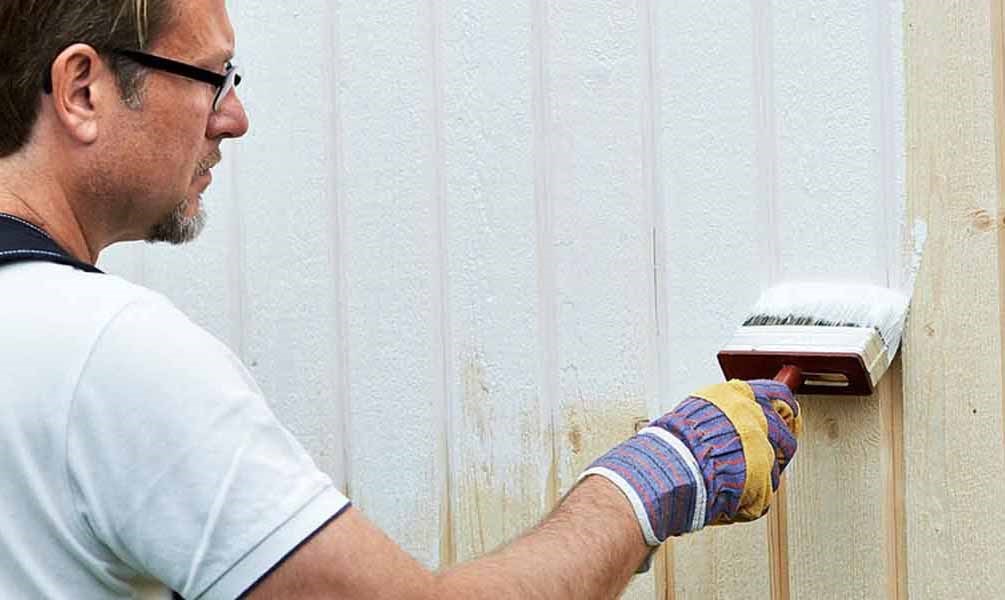Build Your Own Fence
No matter the type of fence you want to erect, much of the work is similar, and you start by deciding where the fence should stand. You can mark the area by inserting stakes into the ground, for example, or by making other types of markings. Spend some time on this to make sure you create straight lines – because, after all, you don’t want a skew fence that doesn’t go in a straight line.
Anchoring fence posts
The fence posts should be placed at a distance of no more than 2 metres. If you erect a tall fence, you can place the posts at shorter intervals. This will make the fence more stable.
The method you choose to anchor the posts depends on, among other things, the ground conditions on the plot. If you put up the fence on frost-susceptible ground, inadequate anchoring can cause the posts lift out of the ground during the winter, which will destroy the fence. Although it is a lot of work, in such cases you should consider casting the posts. This is done exactly the same as when you build a patio on pillars.
If you do not have frost-susceptible ground, you can use post spikes that are hammered into the ground. It is a relatively quick and easy solution. The simplest and quickest solution, however, is to hammer pointed posts straight into the ground. If you choose this option, make sure to use wood that is suitable for continuous contact with soil.
If you build your fence on rock, drill holes with a rotary hammer and cast the foundations with chemical anchor.
What type of fence do you want?
There are several options when it comes to the appearance of the fence. You can choose a fence based on your personal preferences and how much effort you want to put into it.
If you only want to separate your plot from your neighbour, you can erect a low fence using two or three boards placed horizontally. Then you simply attach the boards straight onto the fence posts. It makes the job very fast, but you won’t get a tight fence. You can, of course, place multiple boards or planks closer together to make a tighter fence.
If you want to build a more classic fence, such as a picket fence, you need to use vertical boards. This also requires hammering in nails into the fence posts to secure the boards. For lower fences, two nails are sufficient. The bottom should be raised off the ground a bit to keep it dry. The nails should measure at least 36 x 73 mm, and the for the pickets you can use boards measuring 21 x 73 mm or planks measuring 21 x 48 mm.
On picket fences, it is customary to cut the board tops into a point. Many people also like the boards to go in an arch upwards or downwards between the posts. Also, remember to make a drip edge at the bottom of the boards so that the water flows off them more easily.
Another option is to build a wire-mesh fence. This will give you a tight and maintenance-free fence without very much work. Once the fence posts are set up, it is easy to roll out the wire-mesh and attach it. Please note that a wire-mesh fence must be built with special fence posts and separate parts to fasten the wire mesh. Wire-mesh fences are also well suited for making dog kennels or similar.
Consider your neighbours and observe building regulations
It is always a good idea to have a chat with your neighbours if you want to erect a fence at the plot boundary. Your neighbour may not share your views on aesthetics, and they may not want to see the back of a fence in their own yard. Maybe you can build the fence together and share the costs? It is also a good idea to agree on the maintenance responsibilities.
Before you get started, it is also important to check the building regulations – you may not be allowed to put up the fence you want. This is especially true where you are going to erect a fence along any neighbouring plots.
You should also be aware that when erecting a fence along a road, there are separate regulations in place to ensure visibility for both pedestrians and motorists. These regulations can affect both the height of the fence and how close to the road you are allowed to erect it.




